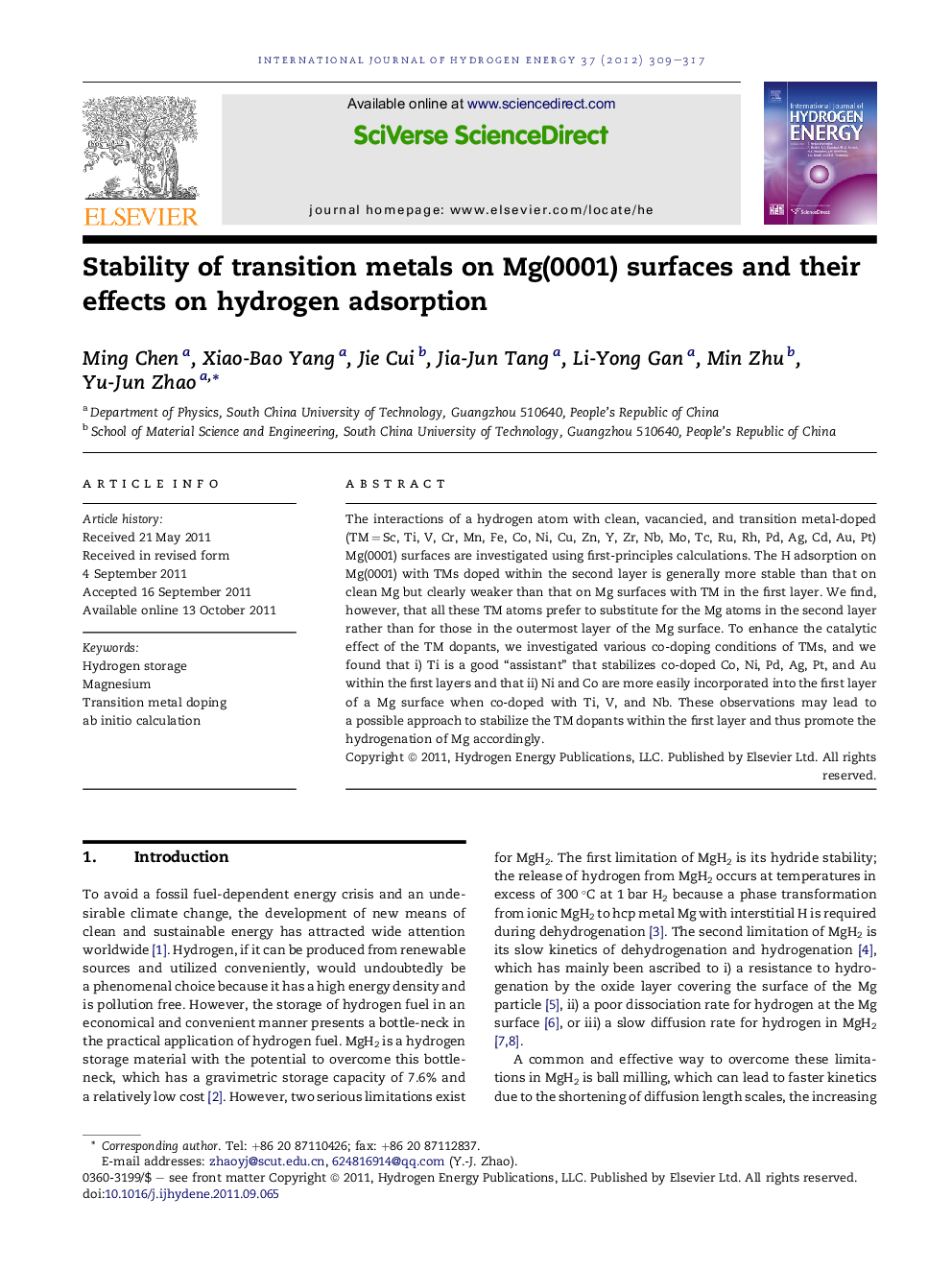| Article ID | Journal | Published Year | Pages | File Type |
|---|---|---|---|---|
| 1277146 | International Journal of Hydrogen Energy | 2012 | 9 Pages |
The interactions of a hydrogen atom with clean, vacancied, and transition metal-doped (TM = Sc, Ti, V, Cr, Mn, Fe, Co, Ni, Cu, Zn, Y, Zr, Nb, Mo, Tc, Ru, Rh, Pd, Ag, Cd, Au, Pt) Mg(0001) surfaces are investigated using first-principles calculations. The H adsorption on Mg(0001) with TMs doped within the second layer is generally more stable than that on clean Mg but clearly weaker than that on Mg surfaces with TM in the first layer. We find, however, that all these TM atoms prefer to substitute for the Mg atoms in the second layer rather than for those in the outermost layer of the Mg surface. To enhance the catalytic effect of the TM dopants, we investigated various co-doping conditions of TMs, and we found that i) Ti is a good “assistant” that stabilizes co-doped Co, Ni, Pd, Ag, Pt, and Au within the first layers and that ii) Ni and Co are more easily incorporated into the first layer of a Mg surface when co-doped with Ti, V, and Nb. These observations may lead to a possible approach to stabilize the TM dopants within the first layer and thus promote the hydrogenation of Mg accordingly.
► H adsorption is enhanced with transition metals (TMs) in the outermost layer of Mg. ► However, most TMs favor incorporation into the second layer of Mg surfaces. ► Ti can stabilize the co-doped Co, Ni, Pd, Ag, Pt, and Au within the first layers. ► Ni and Co are easily incorporated into the first layer with co-doped Ti, V, and Nb.
